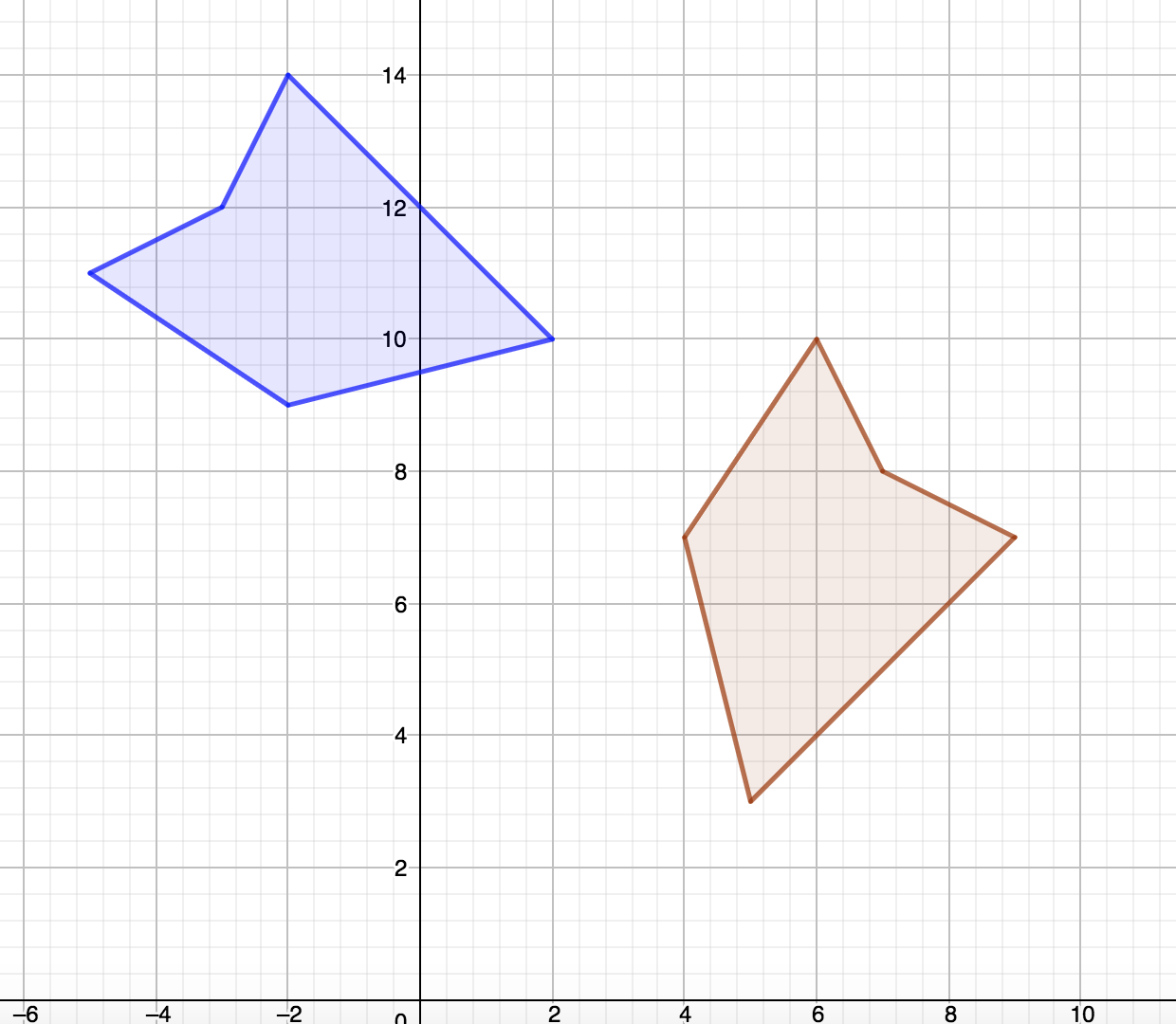Multiple Transformations - Congruent Shapes
By David Kwan
starstar
Last updated almost 6 years ago
9 Questions
Note from the author:
This Formative is by: Brian Gervase
This mini lesson allows students to 'prove' two shapes are congruent by using a translation and a rotation to match up the shapes. The lesson contains a video sample and a play pad for trying it out in Geogebra.
In this mini-lesson you will have the opportunity to link multiple transformations together in order to achieve a final result.
1
1.
Imagine you had two congruent shapes sitting on your desk in any random orientation. If you had to use transformations to EXPLAIN how to move one object exactly on top of the other, what type of moves would you most likely need? (choose all that apply)
In the animation below, take note of how the green triangle is moved to match up with the red. There are TWO specific transformations that happen here. This is your model for performing your own combination at the end of this lesson.
In the applet below, your goal is to use a translation and then a rotation to move the pink rectangle onto the black outline.
1
2.
Before performing a translation in Geogebra, you first need to define:
1
3.
Before performing a rotation in Geogebra, you first need to define:
1) Define your vector that tells Geogebra where to move your rectangle. You only need to match up one vertex to get started! In your head you should be saying, "I want to move THIS point right HERE" as you use the vector tool.
2) Use the translation tool and move the pink rectangle by your vector. Use the filling slider to "turn off" the original pink so it is easier to see your work.
3) Define the ANGLE that you want to rotate your object by using the angle tool. The angle will be a nice integer value and displayed for you. Take note so you can use it.
4) Use the rotate command (and your angle) to make the final move.
Note: You can use the "New Context" button to get a fresh problem. Try it 2 or 3 times until you really get the hang of it, and then help people around you!
1
4.
The above excercise in some ways is a 'proof' that the two rectangles are congruent to each other. Explain how you KNOW that the two shapes are congruent after these transformations. Use the properties of translations and rotations to support your answer.
1
5.
On a 2D plane, any shape can be moved to cover a congruent shape using only translations and rotations.
1
6.
Explain why this cannot be done with only translations or only rotations.
Your turn!
Your final assignment is to create a polygon transformation for someone else to try. Here are the rules:
1) On a graph board or Geogebra, create a polygon with three to five vertices, your choice.
2) Determine a translation for your object (keep it so your shape stays on the board!)
3) Then rotate your object by any multiple of 90 degrees about one of its vertices.
4) You should show ONLY the original shape and the the final image.
5) Exchange with a partner and let them try and solve your movement.
1
7.
Explain the two transformations you used to solve your partner's problem. Be specific and use exact values. Pretend you are writing directions for someone not named Mr. Gervase.
1
8.

Give specific directions to move the orange shape ONTO the blue shape.
Be VERY specific and express all movements with numbers, and not English. Your final answer should read like the statements below!
1) Translate the point ___________ by the vector _____________.
2) Rotate the image about the point ____________ by ___________ degrees.
1
9.

Give specific directions to move the blue shape ONTO the orange shape.